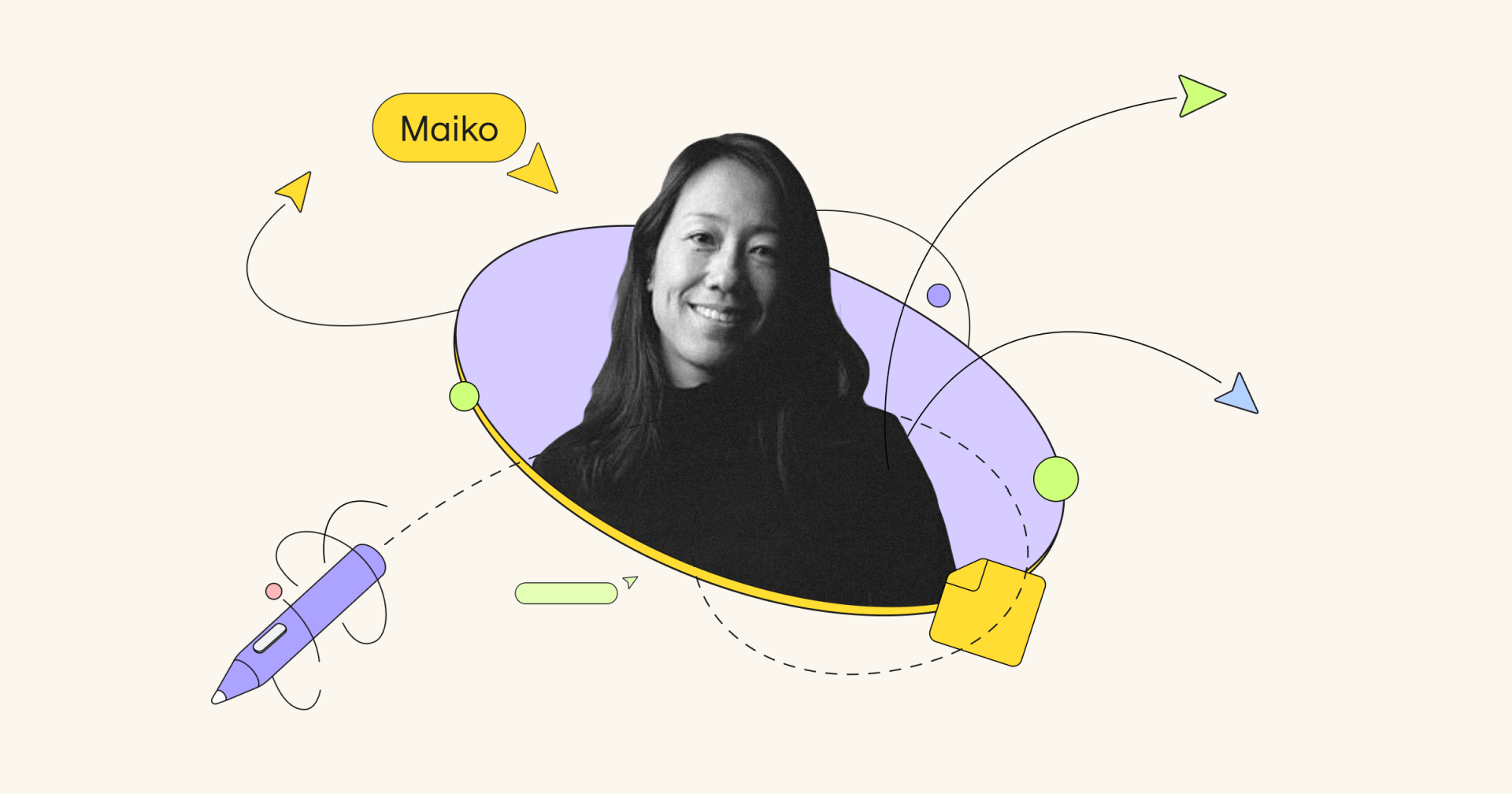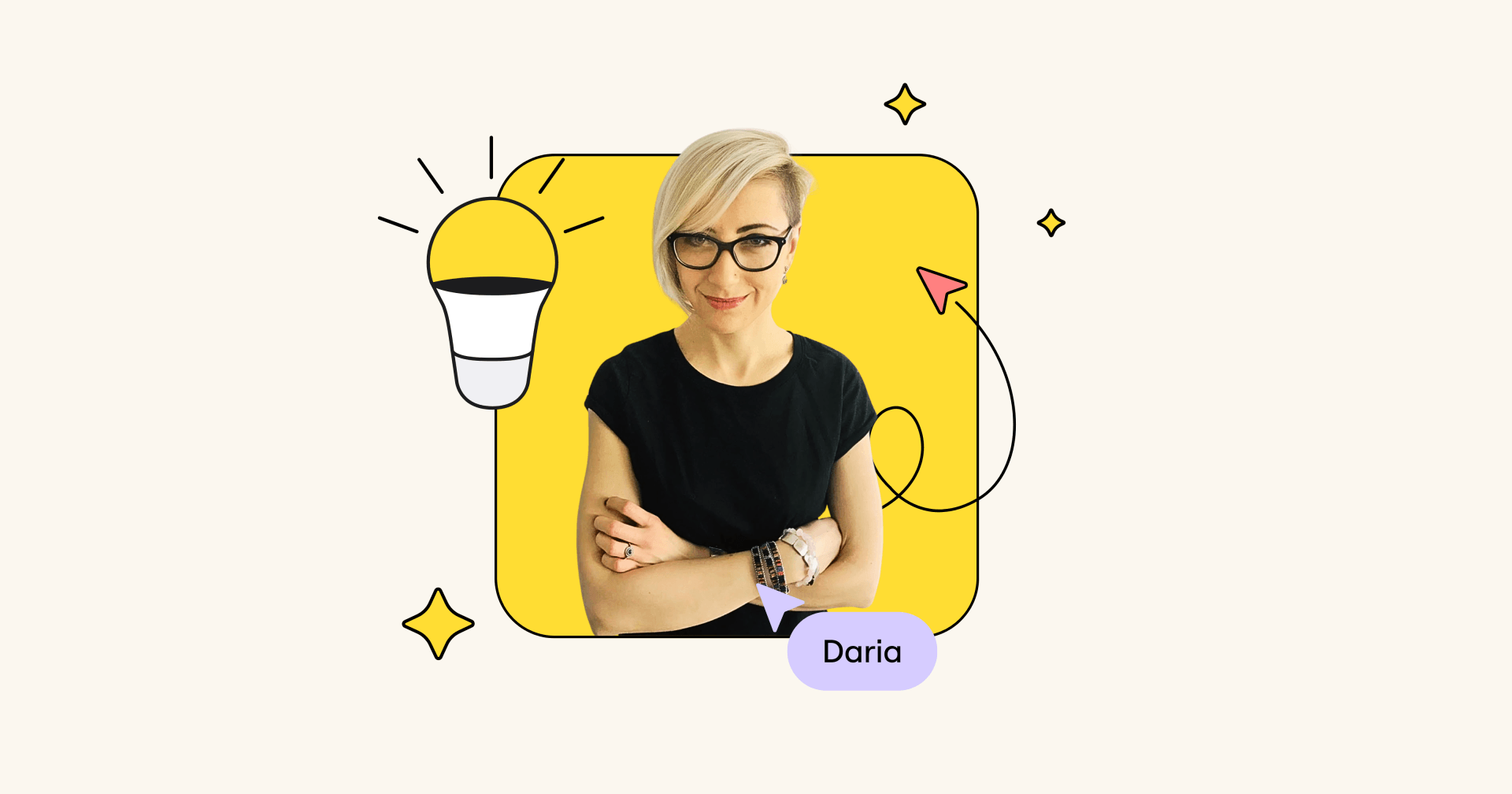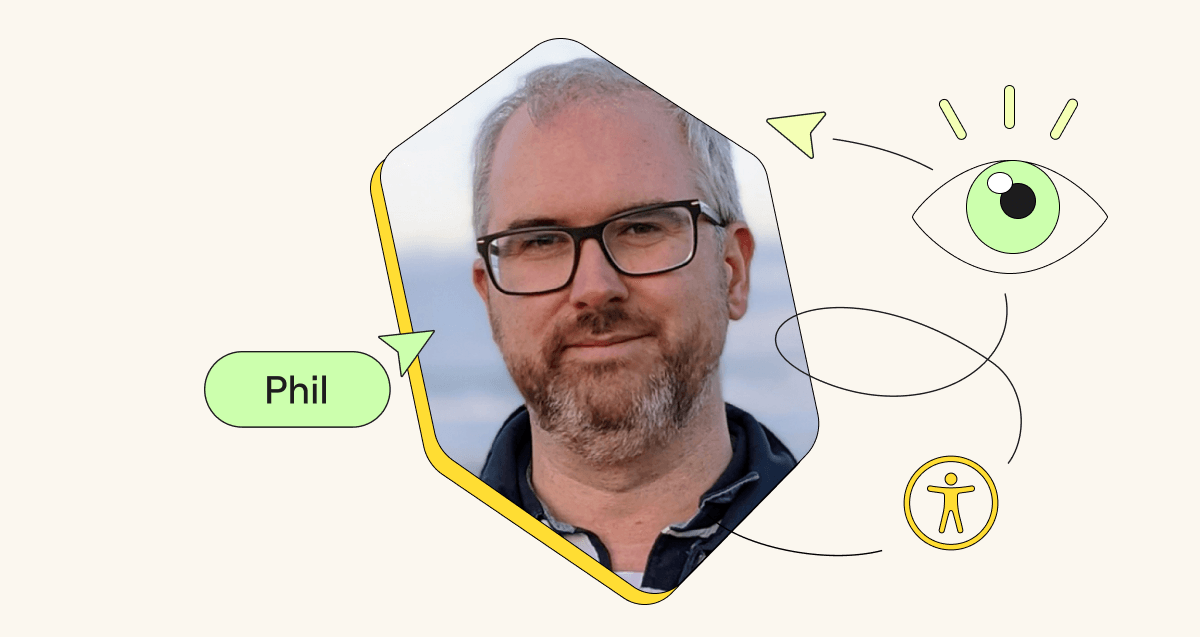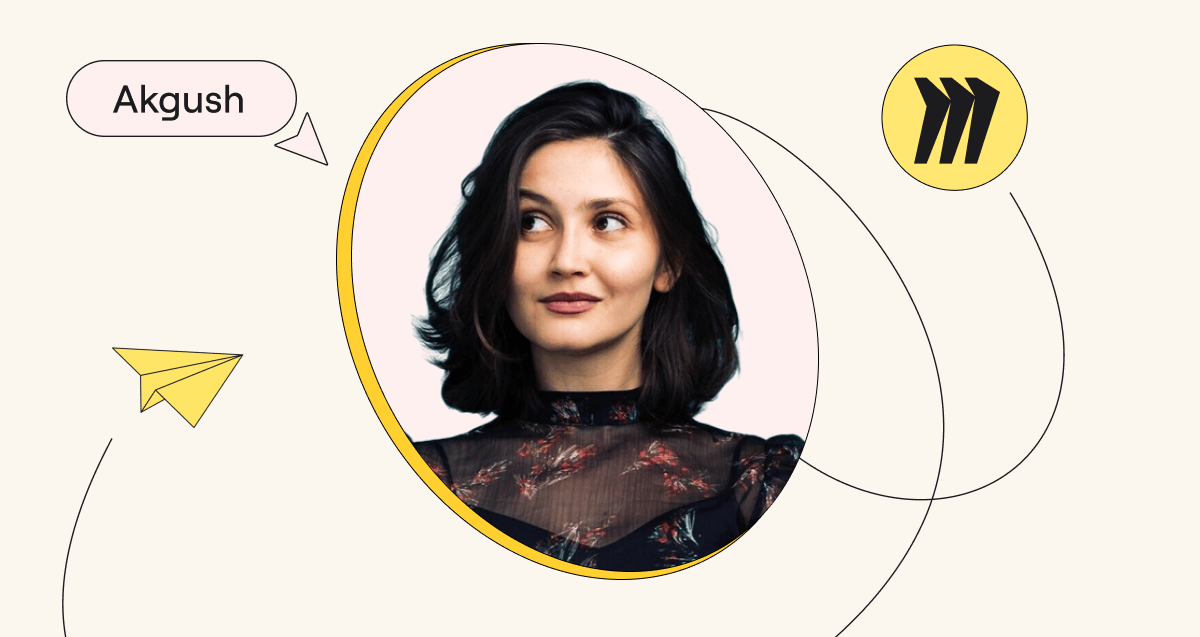Meet Maiko Senda, the driving force behind design excellence at Miro. Maiko has made her mark at industry giants like Microsoft and Meta with a career dedicated to design and a passion for building exceptional teams and solving tough problems. Join us as we explore her journey, insights, and the exciting future of design innovation.
You joined us at the end of 2023. What drew you to Miro?
I joined Miro for several compelling reasons.The main one is that I wanted to challenge myself at a private enterprise that feels high stakes after working at big tech companies like Microsoft and Meta for over a decade.
While I was thinking about what could be next, I was introduced to Andrey Khusid (Miro’s CEO and co-founder), and was instantly captivated by the untapped potential of a collaboration tool that empowers people to achieve the unimaginable.
With my experience shipping various products in a fast-paced environment, I eagerly joined to help build and drive the design team through this crucial phase of Miro’s transformation. At Miro, ‘launch fast and iterate,’ is one of our company behaviors, making rapid progress and adjustments integral to our approach. I’m excited to contribute to this ethos as we innovate and evolve, ensuring our designs align with the dynamic needs of our users and our company goals.
I also love how welcoming and social Miro feels compared to other rigid productivity tools, and I wanted to build on the experience.
Can you give us the elevator pitch of your role and share why you believe design plays a crucial role in shaping Miro’s identity and success?
My role is to build a world-class thriving design team that delivers a great product experience.
The design team collaborates with our analytics, marketing, product, and engineering partners to identify essential features for the business and is responsible for creating exceptional user experiences. Developing a user-friendly interface that is intuitive and easy to use will be challenging due to the complexities of our system, but it’s essential to stay competitive in the market.
What truly energizes me when I envision the Innovation Workspace is strategizing how to use emotional resonance as a competitive advantage. How can we stand out from the competition and make users care about Miro beyond its functionality?
My goal is for the design team to identify these exclusive moments that embody the essence of Miro, and to make them so exceptional that people can’t even consider using another tool.
Which of the Miro values resonates with you the most and why? Could you give us an example?
If I had to pick one that really speaks to me as we embark on this new chapter, it would be Play as a Team to Win the World.
To achieve our ambitious goals for fiscal year 2025, we need to cultivate a culture of open collaboration, empowerment, trust, and accountability for delivering results.
Working as a team will make our journey more rewarding, and there’s nothing we can’t achieve together.
We’re on a critical mission here at Miro. We have a clear and compelling vision and strategy articulated across the company that requires all hands on deck. To set us up for success we’ve made foundational adjustments across the product organization to operate more effectively. And despite the nontrivial amount of change management required, I see teams stepping up to challenge. I’m seeing individuals feel a new sense of motivation, showing up, busting inertia, and leaning in with a heightened sense of accountability. The cultural change I’ve seen since I joined six months ago is astounding and the sense of team here at Miro is stronger than any other company. As a team, we will win!
Failure can often be seen as a part of innovation. Can you share a situation where a failure led to a more successful outcome?
Innovation often entails navigating through failures to achieve success ultimately. In a previous role, we encountered significant challenges during a product launch, which faced criticism and technical limitations. However, rather than viewing these setbacks as overwhelming obstacles, we embraced them as opportunities for learning and growth.
We systematically analyzed the shortcomings and approached each setback as a learning experience. This proactive approach allowed us to identify areas for improvement and iterate towards a solution. Through persistence and innovation, we successfully integrated a wide range of features into a sleek design, ultimately introducing a new product category to the market.
The key takeaway from this experience is the importance of embracing failure as an important element of the innovation process. By viewing failures as opportunities for learning and improvement, we not only overcame immediate challenges but also laid the groundwork for long-term success. This mindset shift enabled us to utilize the lessons learned from failure and apply them to future projects, driving continued innovation and growth.
I’m excited to be part of Miro, where we embrace failure, learn from it, and continually iterate to drive innovation.
What is a pivotal moment in your career that shaped your leadership approach today?
Years ago, I was part of a project team facing significant challenges. We were lagging behind our competitors, with slow progress and little innovation, and we knew we had to take immediate action.
For several weeks, we took the entire design organization offline to work solely on the future of the product. It was a pivotal moment in my career, filled with excitement, but it also taught me some difficult lessons. The team remained enthusiastic and creative during the entire process, and there was a genuine sense of excitement. However, when deciding on a direction, the atmosphere shifted and the pressure started to build. Tension grew rapidly, because there was a fear of failure. Our goal was to offer the team a safe space for brainstorming and developing a vision, but without enough trust in us or the process, we couldn’t achieve the desired outcome.
Since then, as a new leader joining teams, I have discovered and embraced the significance of investing time in establishing trust. I have also learned to communicate openly and honestly about my motivations as they develop, while deliberately working towards reshaping the team’s culture gradually.
What are some of your favorite hobbies outside of work?
Building things brings me joy, and I am obsessed with exploring various techniques to achieve different results.
Recently, I had a blast renovating a 12-foot pop-up camper, designing an aquascape, and constructing a terrarium that fits in a cabinet. My next big project is to open up a Japanese-style campground in France as a prototype.
What specific talents do you seek in potential candidates, and what advice would you offer to individuals aspiring to join the Miro design team?
We’re looking for talented product designers, researchers, and content designers who thrive in solving gnarly problems. Problem-solving is a mindset that can be applied across people, product, and processes, and there are opportunities to elevate across these dimensions. Candidates who proactively ask clarifying questions and are comfortable taking a moment to reflect on questions are also signals that help us build confidence that they can succeed at Miro. We are agile so driving with clarity is key to landing impact. Companies are in an innovation race to survive, and the problems for us to solve to help them get there are big. If that gets you excited, let’s talk!
Check out our open roles here!



